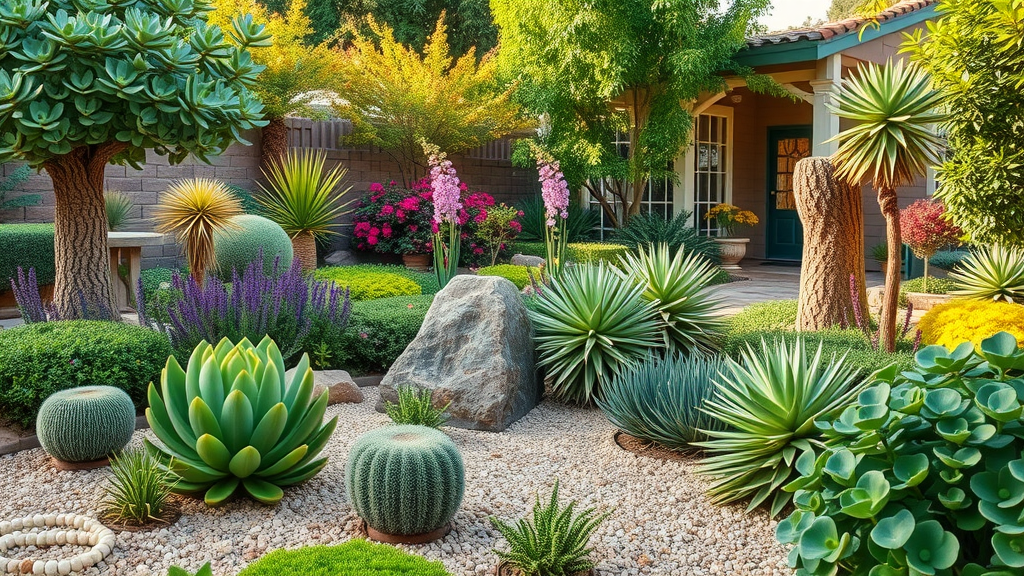
The Best Landscape Contractor in San Diego Breceda Landscape
October 6, 2025
Xeriscaping Tips: Save Water Without Sacrificing Beauty
October 14, 2025“Did you know that switching to drought-tolerant plants can reduce your landscape water use by up to 70%? San Diego’s climate demands smart choices—let’s transform your dry winter garden into a vibrant, low-maintenance paradise.”
In San Diego, smart plant choices are not just for looks—they’re crucial for water conservation and year-round beauty. Whether you’re updating a tired yard or entirely rethinking your landscape design, selecting drought-tolerant plants San Diego residents have relied on can save you time, money, and the frustration of constant maintenance—especially through our characteristically dry winters. This comprehensive guide gives you more than just a list: you’ll discover proven strategies, native plant recommendations, and landscape solutions that thrive in our Mediterranean climate.
What You’ll Learn About Drought-Tolerant Plants in San Diego
- How to select the right drought-tolerant plants for San Diego’s climate
- Top native plants and exotic options for sustainable gardens
- Easy landscape design tips for drought-resistant success
- Answers to San Diego’s most common drought plant questions
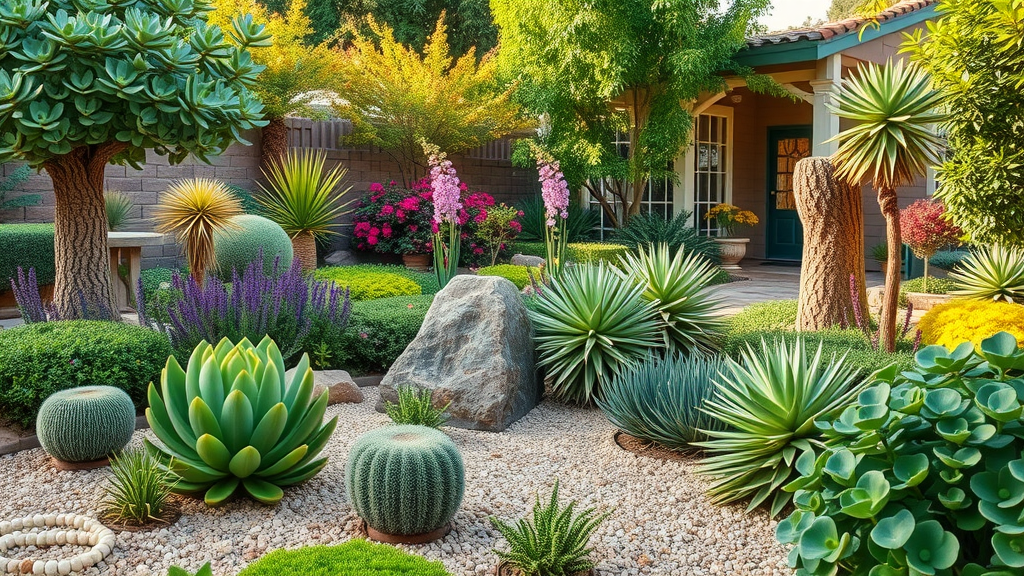
Why Drought-Tolerant Plants Matter in San Diego Landscape Design
Water Conservation and Sustainable Practices for Diego Gardens
Water is scarce in Southern California, especially during dry winters when rainfall barely makes a dent in the landscape’s needs. By prioritizing drought-tolerant plants San Diego homeowners set the gold standard for sustainable landscapes. Replacing thirsty lawns and tropicals with native plants and low-water options doesn’t just benefit your utility bills—it directly supports San Diego County’s urgent water conservation efforts. Plus, modern irrigation techniques like drip systems paired with mulch keep soil moist and cool, further reducing evaporation and the need for frequent watering. By focusing on water-wise solutions, your San Diego garden becomes resilient, thriving even through hot summer stretches and periods of water restrictions.
Adopting sustainable landscaping is more than a trend—it’s essential for long-term success. Homeowners and communities across San Diego increasingly recognize that drought-tolerant plants support local wildlife and stabilize soil, preventing erosion during wet winters and heavy rains. With thoughtful landscape design and maintenance practices, you can enjoy lushness and color in your yard without relying on constant irrigation. Whether you’re supplementing with draining soil, grouping plants by water needs, or layering mulch, every step brings you closer to a beautiful, practical garden made for California’s climate.
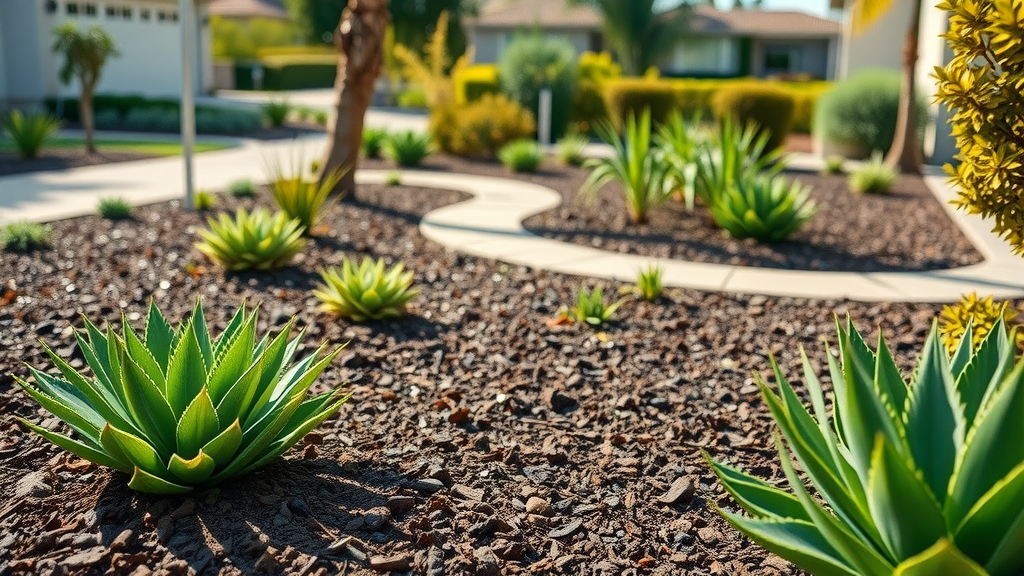
The Environmental and Economic Benefits of Drought-Tolerant Plants
The shift to drought-tolerant landscaping has far-reaching benefits beyond individual properties. Planting native and drought-tolerant choices supports pollinators, birds, and beneficial insects, which are crucial for a balanced ecosystem in San Diego County’s urban and suburban environments. Gardens rich with California native plants not only attract hummingbirds and butterflies but also minimize pesticides, since natives are better adapted to local pests. Economically, low-water gardens pay off by significantly reducing water bills, minimizing the need for fertilizers, and decreasing expensive maintenance visits—a win for your wallet and for city resources.
With drought tolerant plants, San Diego homes stay greener all year long, even through the driest seasons. Replacing traditional landscapes with adaptable species, such as cleveland sage and California buckwheat, means less replanting, fewer failed plants, and longer-lasting visual appeal. It’s not just about enduring the next drought: it’s about designing outdoor spaces that enhance property value and promote environmental health for years to come.
How to Choose Drought-Tolerant Plants for Your San Diego Garden
Understanding San Diego’s Climate and Soil Conditions
San Diego’s Mediterranean climate features mild, wet winters and hot, arid summers—requiring a thoughtful plant selection strategy. Many drought-tolerant plants perform best in full sun, but others thrive in partial shade, so consider the light exposure of your site. Good drainage is critical, especially in clay-heavy or compacted soils found in many San Diego gardens. Amending planting beds with compost, sand, or gravel can improve drainage, keeping roots healthy and preventing rot through both dry and wet seasons.
Familiarize yourself with microclimates, from coastal fog zones to inland heat pockets, as they play a significant role in plant performance. Don’t overlook elevation and wind exposure, which affect soil moisture and temperature, especially during summer months. For optimal results, choose plants adapted to your specific part of San Diego County, allowing them to survive—and thrive—with minimal watering or intervention.
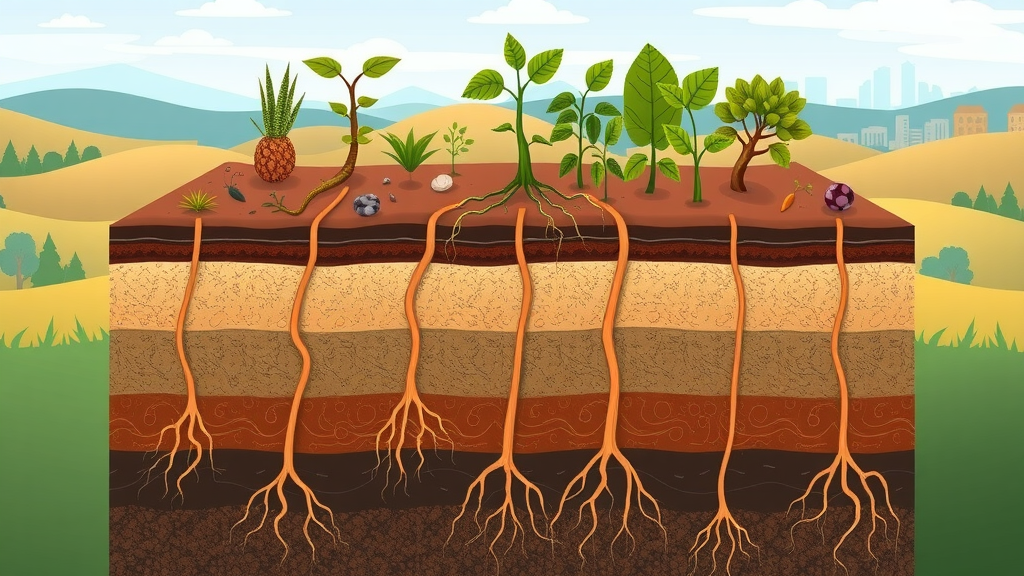
Native Plants vs. Non-Native Drought Tolerant Choices
Gardeners in San Diego have the option to select either California native plants or well-adapted, non-native drought tolerant plants. Natives, such as Artemisia californica and Salvia clevelandii, have evolved to survive local climate cycles, poor soils, and low water availability, making them ideal for sustaining wildlife and requiring less maintenance. They form the backbone of a resilient landscape design and help reestablish biodiversity in urban neighborhoods.
Non-natives, like Agave americana or Lavandula stoechas, offer vibrant foliage, unique textures, and year-round appeal while demanding little water. Combining natives with select drought tolerant exotics broadens the palette of colors and forms available, creating a dynamic San Diego garden that’s both beautiful and water-smart. Using a mix ensures year-round interest and supports a more extensive range of pollinators, providing you with the best of both worlds.
50 Best Drought-Tolerant Plants San Diego Homeowners Should Consider
- Agave americana (Century Plant)
- Aloe striata (Coral Aloe)
- Arctostaphylos ground covers (Manzanita)
- Artemisia californica (California Sagebrush)
- Baccharis pilularis (Coyote Brush)
- Ceanothus (California Lilac)
- Cercis occidentalis (Western Redbud)
- Chondropetalum tectorum (Cape Rush)
- Echeveria spp. (Hens and Chicks)
- Encelia farinosa (Brittlebush)
- Eriogonum fasciculatum (California Buckwheat)
- Festuca californica (California Fescue)
- Hesperaloe parviflora (Red Yucca)
- Iris douglasiana (Douglas Iris)
- Juncus patens (California Gray Rush)
- Lavandula stoechas (Spanish Lavender)
- Leucophyllum frutescens (Texas Sage)
- Limonium perezii (Sea Lavender)
- Muhlenbergia rigens (Deer Grass)
- Opuntia spp. (Prickly Pear Cactus)
- Penstemon spectabilis (Showy Penstemon)
- Phlomis fruticosa (Jerusalem Sage)
- Rhamnus californica (Coffeeberry)
- Romneya coulteri (Matilija Poppy)
- Salvia apiana (White Sage)
- Salvia clevelandii (Cleveland Sage)
- Salvia leucophylla (Purple Sage)
- Senecio mandraliscae (Blue Chalksticks)
- Sphaeralcea ambigua (Desert Globemallow)
- Symphyotrichum chilense (California Aster)
- Teucrium chamaedrys (Germander)
- Verbena lilacina (Cedros Island Verbena)
- Yucca filamentosa (Adam’s Needle)
- Achillea millefolium (Common Yarrow)
- Euphorbia characias (Mediterranean Spurge)
- Dymondia margaretae
- Gaillardia pulchella (Blanket Flower)
- Grevillea ‘Noellii’
- Hypericum calycinum (St. John’s Wort)
- Lycium fremontii (Desert Wolfberry)
- Mimulus aurantiacus (Sticky Monkey Flower)
- Nassella pulchra (Purple Needlegrass)
- Oenothera elata (Hooker’s Evening Primrose)
- Pistacia lentiscus (Mastic Tree)
- Quercus berberidifolia (Scrub Oak)
- Salvia sonomensis (Creeping Sage)
- Solidago californica (California Goldenrod)
- Tetraneuris acaulis (Angelita Daisy)
- Viguiera laciniata (San Diego Sunflower)
- Zauschneria californica (California Fuchsia)
Native plant expert Linda Jones says, “Using native and drought-tolerant species not only saves water but also fosters local wildlife and pollinators, creating a more resilient San Diego garden.”
Enjoy a quick video roundup of the most stunning, easy-care drought tolerant plants San Diego residents recommend.
Visually engaging video tour highlighting diverse drought-tolerant plant species in various San Diego residential landscapes with brief care tips and plant identifications.
Essential Care Tips for Drought-Tolerant Plants in San Diego
Watering Schedules & Soil Amendments for San Diego Gardens
Once established, most drought-tolerant plants require minimal watering—often just every two weeks, even through the hottest parts of the summer months. The best watering schedule adapts to plant type and maturity, but a good rule is deep, infrequent soakings rather than shallow sprinklings. Always check soil moisture at the root zone before irrigating; plants in clay soils may need even less frequent water compared to those in sandy or fast-draining soils. Amending your planting areas with compost improves drainage, retains the right level of moisture, and provides nutrients essential for healthy root development.
In San Diego’s climate, mulch is your garden’s best friend. Organic mulches like wood chips or shredded bark protect soil, reduce evaporation, and suppress weed growth. For areas with heavy clay, adding coarse sand and organic matter before planting drought tolerant plants prepares beds for maximum success—your effort at this stage pays off in lower maintenance and happier, drought-hardy landscape year-round.
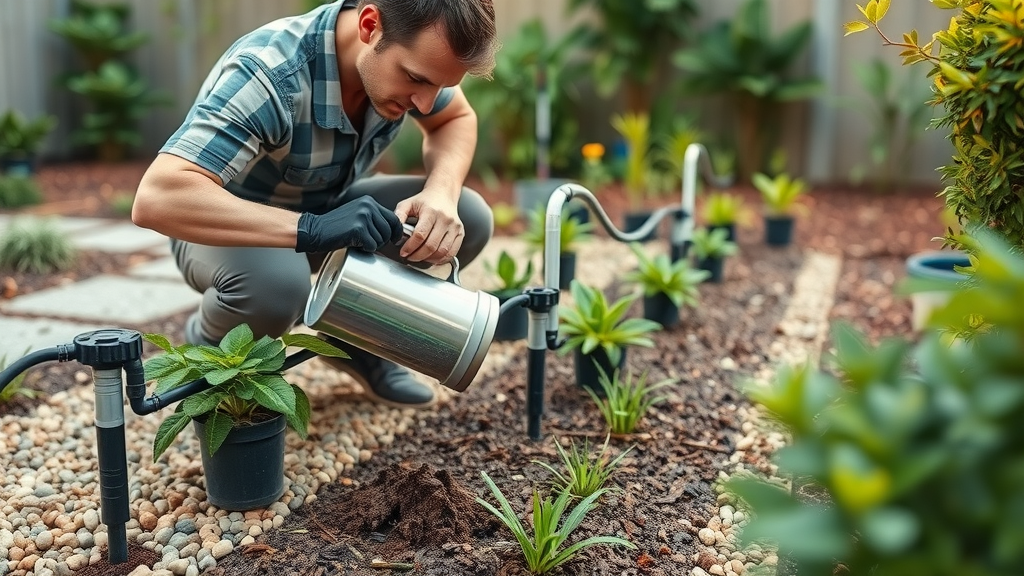
Fertilization, Pruning, and Pest Control for Drought-Tolerant Landscapes
Over-fertilizing is a common mistake with drought-tolerant and native plant species. Most prefer lean soils and minimal feeding, especially mature plants well-adapted to San Diego County’s conditions. Choose low-nitrogen, organic fertilizers—applied only in early spring if needed—to encourage steady, sustainable growth. As for pruning, annual shaping after flowering and removing dead or damaged limbs keeps your plants looking tidy while preventing pests and diseases from taking hold.
Drought-tolerant landscapes are generally more pest-resistant, but vigilant inspection is still important. Check for aphids, mites, or fungal issues—especially during prolonged wet winters or after summer rains. Hand-pick pests or spray with mild insecticidal soap if infestations appear. Regular garden monitoring and prompt pruning of problem branches ensure your drought tolerant plants thrive with minimal chemical intervention.
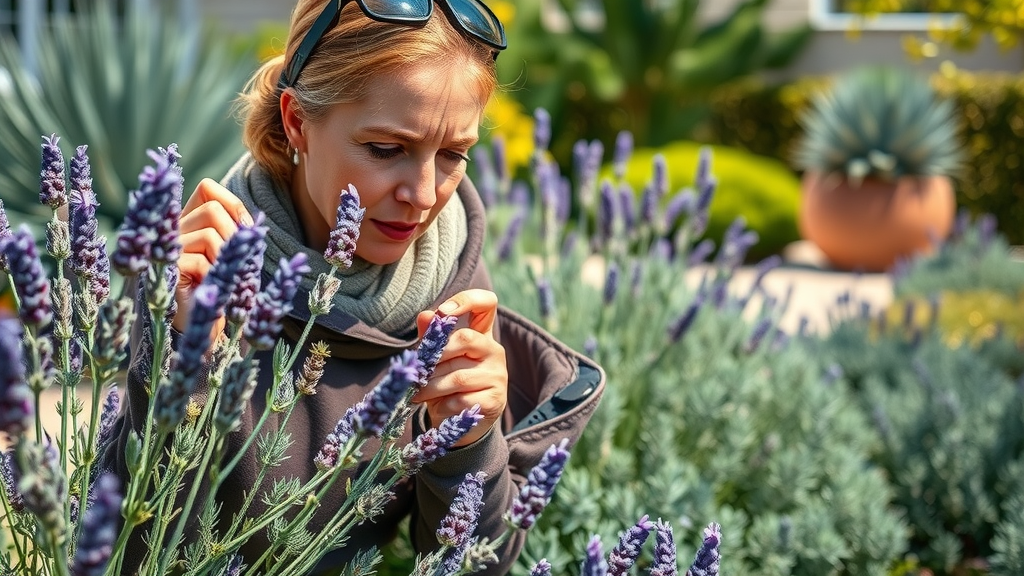
Table: Drought-Tolerant Plants San Diego – Quick Reference
| Plant Name | Type | Mature Size | Bloom Time | Native to San Diego | Special Features |
|---|---|---|---|---|---|
| Ceanothus (California Lilac) | Shrub | 6 ft tall | Spring | Yes | Blue flowers, attracts pollinators, evergreen |
| Agave americana | Succulent | 5-8 ft tall | Rare | No | Striking architectural form, low water, full sun |
| Salvia clevelandii (Cleveland Sage) | Shrub | 4 ft tall | Summer | Yes | Fragrant foliage, purple flowers, attracts hummingbirds |
| Dymondia margaretae | Groundcover | 2 inches | Summer | No | Silver leaves, drought hardy, tolerates foot traffic |
| Echeveria spp. | Succulent | 6 in. tall | Spring | No | Rosette form, container friendly, full sun/partial shade |
How to Integrate Drought-Tolerant Plants into Your San Diego Landscape Design
Layering and Grouping Drought-Tolerant and Native Plants
Successful San Diego garden design relies on grouping plants with similar water needs and arranging them in layers for maximum visual and ecological benefit. Start with larger shrubs and trees at the back of borders, progressing to medium-height perennials and trailing groundcovers up front. This approach creates depth and provides essential microclimates for both high and low water-needs plants. By grouping native plants like California buckwheat with other drought-tolerant choices, you simplify irrigation zones for water efficiency and reduce overall maintenance.
Clustering species—such as combining deer grass, lavender, and blue chalksticks—reduces evaporation, as foliage shades soil and root systems. Layered planting also encourages biodiversity, attracting hummingbirds, butterflies, and beneficial insects, while providing year-round structure and seasonal color. Experiment with arrangements until you find combinations that both please the eye and stand up to San Diego’s hot summers and dry winters.
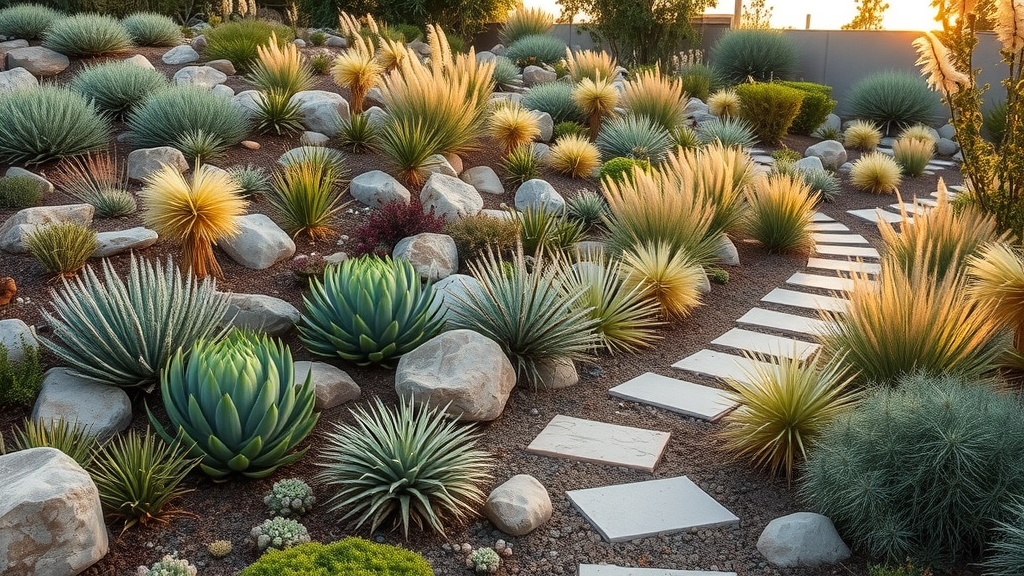
Color, Texture, and Focal Points for San Diego Gardens
Drought-tolerant gardens in San Diego don’t have to be sparse or dull—with strategic choices, they offer spectacular color and texture. Mix silver-leaved plants like dymondia or Jerusalem sage with the vibrant blooms of California fuchsia or blanket flower. Large succulents, such as agave and red yucca, provide architectural drama as focal points. Consider grasses like deer grass or purple needlegrass for movement and softness.
Use contrasting textures—rigid cacti beside billowy sages, or smooth-leaved echeveria next to spiky yucca—to enhance visual interest and structure year-round. Plan your color scheme around seasonal bloom cycles, ensuring there’s always something in flower, from early spring to late summer months. This dynamic, well-composed look is achievable in any San Diego outdoor space, large or small.
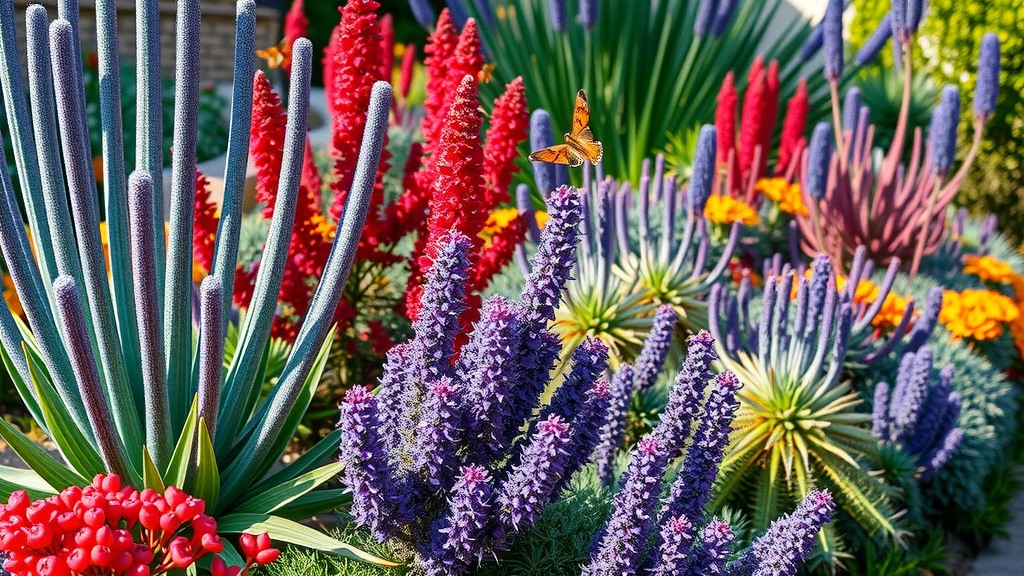
Common Mistakes to Avoid with Drought-Tolerant Plants
- Overwatering drought-tolerant plants
- Ignoring proper soil drainage
- Planting out of season for San Diego
- Mixing incompatible plant types
- Neglecting landscape maintenance
People Also Ask: What is the Best Drought-Tolerant Ground Cover in San Diego?
Best Drought-Tolerant Ground Cover: Dymondia margaretae
Dymondia margaretae is the standout choice for drought-tolerant ground cover in San Diego. This tough perennial forms a dense, silver-green mat with bright yellow blooms, excellent for pathways and sunny borders. It thrives in full sun, handles occasional foot traffic, and endures with minimal irrigation—an effortless, beautiful ground cover for the water-smart San Diego garden.
Dymondia’s silver leaves and yellow blooms make it ideal for low-water San Diego gardens. It thrives in sun, tolerates foot traffic, and survives on minimal irrigation.
Its silver-tinged foliage not only suppresses weeds and reflects sunlight, keeping ground temperatures cooler, but also adds a modern, airy feel to every landscape design. If you’re seeking reliable erosion control, easy establishment, and almost year-round visual interest, Dymondia is your go-to plant for San Diego county yards.
People Also Ask: What Are the Low Maintenance Desert Plants in California?
Low Maintenance Desert Plant Options
Several desert natives excel in California’s driest regions—including San Diego. Agave, Hesperaloe (Red Yucca), and Opuntia (Prickly Pear Cactus) are classic examples. These plants need little water, tolerate rocky and sandy soils, and are virtually immune to most pests. They provide a bold architectural look with minimum attention, perfect for the busy homeowner or for hard-to-water areas.
Agave, Hesperaloe, and Opuntia are classic, low-maintenance desert plants suited for San Diego’s dry climate. They need little water and thrive with neglect.
For landscape design focused on effortless upkeep, these species outshine turf or thirsty shrubs. Many of these desert plants also flower spectacularly in early spring or summer months, attracting birds and adding unexpected color to your garden.
People Also Ask: What Plants Grow Year-Round in San Diego?
Year-Round Growers for San Diego
If you’re looking for plants that provide continuous appeal, focus on reliable evergreens and perennials. California Lilac (Ceanothus), Cleveland Sage (Salvia clevelandii), and Red Yucca (Hesperaloe parviflora) keep their attractive foliage and often bloom in cycles. These selections maintain structure and interest even during dry winter periods, supporting local wildlife and requiring little additional care.
California Lilac, Cleveland Sage, and Red Yucca keep your garden beautiful year-round, enduring dry winters and blooming in cycles.
These plants lend stability and color to your outdoor space, resisting seasonal stress and creating a habitat for birds and pollinators. Their adaptability makes them top picks for sustainable San Diego home landscaping.
People Also Ask: What Potted Plants Are Drought-Tolerant in California?
Top Drought-Tolerant Potted Plant Picks
Container gardens need resilient plants that don’t demand constant watering. Top picks for California pots include Echeveria varieties, Lavender (especially Spanish Lavender), and Blue Chalksticks (Senecio mandraliscae). All look great in mixed arrangements and can handle the extra heat pots can generate in the summer months.
Echeveria, Lavender, and Blue Chalksticks excel in pots, thriving with minimal watering and adding style to patios and balconies.
These potted drought tolerant plants provide year-round structure, color, and fragrance, transforming balconies and patios into low-water-use havens. Their low maintenance requirements make them favorites among urban and suburban residents alike.
Drought-Tolerant Plants San Diego: FAQs
- How often should I water drought-tolerant plants in a San Diego garden?
Most established drought-tolerant species only need watering every two to three weeks during summer months, and even less during cool seasons. Check soil moisture at the root zone before irrigating; deep watering is better than frequent, shallow irrigation. - Are drought-tolerant plants more susceptible to pests?
Native and drought-tolerant plants tend to be more pest-resistant because they’re adapted to local conditions. However, monitor for pests during wet winters or after stress events and use non-toxic controls if necessary. - Can drought-tolerant plants survive extreme heat waves?
Yes, most are adapted to survive San Diego’s heat. Mulch and occasional deep watering during extended heat waves will minimize stress and keep gardens healthy. - What’s the best fertilizer for native plants in San Diego?
Use low-nitrogen, slow-release, or organic fertilizers sparingly—over-fertilizing can harm natives. Apply only once a year in early spring if needed.
Key Takeaways: Cultivate a Thriving, Water-Smart Diego Garden
- Drought-tolerant plants reduce water usage and thrive in San Diego’s dry winters
- Native plants encourage biodiversity and lower landscape maintenance
- Strategic plant selection and grouping are essential for lasting beauty and sustainability
- Start small, experiment, and gradually transform your garden for a drought-tolerant future
A step-by-step visual walkthrough of planning and planting your drought-tolerant San Diego landscape.
Step-by-step visual guide to planning and planting a drought-tolerant garden for San Diego homes.
Conclusion: Elevate Your San Diego Garden with Drought-Tolerant Plants
You now have 50 excellent choices and expert landscaping strategies to transform your San Diego property into a water-saving, year-round oasis.
Call to Action: Connect with a Leading San Diego Landscape Contractor
Ready to create your ideal low-water garden? Contact Breceda Landscape today for a free consultation on drought-tolerant plants San Diego homeowners trust.https://brecedalandscape.com
Sources
- https://www.cnps.org/gardening/san-diego-county – Example Site
- https://www.wildsd.org/plant-list – Example Site
- https://waterwisegardenplanner.org – Example Site
- https://californianativeplants.com – Example Site
Incorporating drought-tolerant plants into your San Diego garden is a smart choice for conserving water and ensuring year-round beauty. For a comprehensive list of suitable plants, consider exploring the article “Drought Tolerant Plants for San Diego” (dailyhomehints.com), which highlights species like Echeveria, Lavender, and Ceanothus, all well-adapted to the region’s climate. Additionally, the “San Diego Gardening Guide” (hautelifehub.com) offers insights into native plants such as Agave and Aloe, providing detailed care tips to help your garden thrive with minimal maintenance. By consulting these resources, you can select plants that not only enhance your landscape’s aesthetic appeal but also support local ecosystems and reduce water usage.

